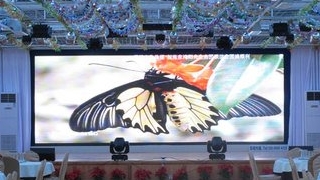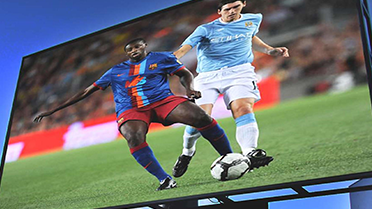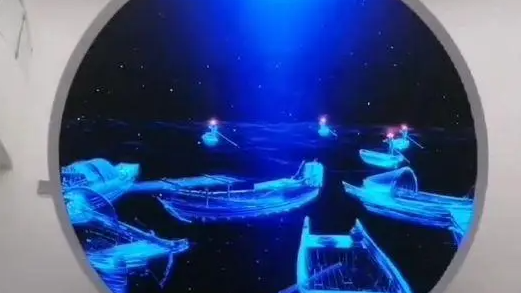




In the past, the LED display screen industry was regarded as a traditional manufacturing industry. With the continuous advancement of technology and the continuous expansion of application fields, the LED display screen industry is transforming from a "traditional industry" to an "emerging industry" and becoming an important part of the information technology industry.For example, in the construction of smart cities, LED display screens, as an important carrier of information display, are deeply integrated with technologies such as the Internet of Things, big data, and artificial intelligence, becoming an important infrastructure for the construction of smart cities; in the cultural and creative industries, LED display screens are combined with technologies such as virtual reality and augmented reality to create an immersive experience space, injecting new vitality into the cultural and creative industries.In short, the LED display screen industry is transforming from a "traditional in
In the past, the LED display screen industry was regarded as a traditional manufacturing industry. With the continuous advancement of technology and the continuous expansion of application fields, the LED display screen industry is transforming from a "traditional industry" to an "emerging industry" and becoming an important part of the information technology industry.For example, in the construction of smart cities, LED display screens, as an important carrier of information display, are deeply integrated with technologies such as the Internet of Things, big data, and artificial intelligence, becoming an important infrastructure for the construction of smart cities; in the cultural and creative industries, LED display screens are combined with technologies such as virtual reality and augmented reality to create an immersive experience space, injecting new vitality into the cultural and creative industries.In short, the LED display screen industry is transforming from a "traditional in
In the past, China's LED display industry mainly followed foreign technology. With the continuous efforts of Chinese companies, the LED display industry is changing from a "follower" to a "leader", and is in a leading position in the world in terms of technological innovation, product application, market scale, etc.For example, in terms of technological innovation, Chinese companies have made breakthroughs in cutting-edge technologies such as Mini/Micro LED and COB, leading the development trend of global display technology; in terms of product application, Chinese companies continue to explore new application areas and apply LED displays to smart cities, cultural creativity, medical health and other fields; in terms of market scale, China is the world's largest producer and consumer of LED displays, and the market scale continues to grow.In short, China's LED display industry is changing from a "follower" to a "leader". It will continue to improve its technological innovation capabili
In the past, Chinese LED display screen enterprises were mainly oriented to the domestic market. With the continuous efforts of Chinese enterprises, the LED display screen industry is changing from "domestic market" to "international market", actively exploring overseas markets, and enhancing brand awareness and influence.For example, in terms of brand building, Chinese enterprises actively participate in international exhibitions to enhance brand awareness; in terms of channel construction, Chinese enterprises actively cooperate with overseas distributors to expand sales channels; in terms of after-sales service, Chinese enterprises actively establish overseas service outlets to provide timely and efficient technical support and after-sales service.In short, the Chinese LED display screen industry is changing from "domestic market" to "international market", and it will continue to enhance brand influence, channel construction capabilities and after-sales service levels, and become a
In the past, Chinese LED display companies mainly sold single products. With the intensification of market competition, the LED display industry is changing from "single product" to "system solution", and companies are more focused on providing customers with one-stop services from solution design, product selection, installation and commissioning to after-sales maintenance.For example, in the construction of smart cities, LED display companies need to provide customized solutions according to customer needs and be responsible for project implementation and operation and maintenance; in the commercial retail field, LED display companies need to provide customers with content production, advertising, data analysis and other services to help customers achieve precision marketing.In short, China's LED display industry is changing from "single product" to "system solution". It needs to continuously improve its service awareness and service capabilities to win the trust of customers and ach
In the past, Chinese LED display companies mainly relied on price advantages to participate in international competition. With the intensification of market competition, the LED display industry is changing from "price advantage" to "value advantage", and companies are paying more attention to product quality, technological innovation and service quality.For example, in terms of product quality, companies pay more attention to the selection of raw materials and the control of production processes to ensure stable and reliable product quality; in terms of technological innovation, companies continue to increase R&D investment to develop new products that are more energy-saving and environmentally friendly and have excellent performance; in terms of service quality, companies pay more attention to customer experience and provide more timely and efficient technical support and after-sales service.In short, China's LED display industry is changing from "price advantage" to "value advantage
In the past, Chinese LED display companies mainly exported products and lacked brand influence. With the continuous efforts of Chinese companies, the LED display industry is changing from "product export" to "brand output", and a number of excellent brands with international competitiveness have emerged.For example, in terms of brand building, Chinese companies actively explore overseas markets to enhance brand awareness and influence; in terms of technological innovation, Chinese companies continue to increase R&D investment and develop core technologies with independent intellectual property rights; in terms of product quality, Chinese companies pay more attention to quality control to ensure stable and reliable product quality.In short, China's LED display industry is changing from "product export" to "brand output", and it will continue to enhance brand influence, technological innovation capabilities and product quality, and become a leader in the global LED display industry. I be
China is the world's largest producer of LED display screens, but in the field of high-end products, there is still a certain gap with foreign brands. In recent years, with the continuous efforts of Chinese companies, the LED display industry is transforming from a "manufacturing power" to a "intelligent manufacturing power", and a number of excellent companies with international competitiveness have emerged.For example, in terms of technological innovation, Chinese companies continue to increase R&D investment and make breakthroughs in cutting-edge technologies such as Mini/Micro LED and COB; in terms of brand building, Chinese companies actively explore overseas markets and enhance brand awareness and influence; in terms of industrial chain integration, Chinese companies continue to strengthen upstream and downstream cooperation and build a complete industrial ecological system.In short, China's LED display industry is transforming from a "manufacturing power" to a "intelligent manuf
In the past, Chinese LED display companies mainly focused on OEM production and lacked independent brands. With the continuous efforts of Chinese companies, the LED display industry is changing from "Chinese products" to "Chinese brands", and a number of excellent brands with international competitiveness have emerged.For example, in terms of brand building, Chinese companies actively explore overseas markets to enhance brand awareness and influence; in terms of technological innovation, Chinese companies continue to increase R&D investment and develop core technologies with independent intellectual property rights; in terms of product quality, Chinese companies pay more attention to quality control to ensure stable and reliable product quality.In short, China's LED display industry is changing from "Chinese products" to "Chinese brands". It will continue to enhance its brand influence, technological innovation capabilities and product quality, and become a leader in the global LED dis